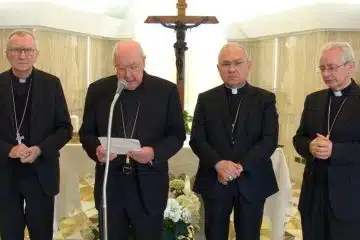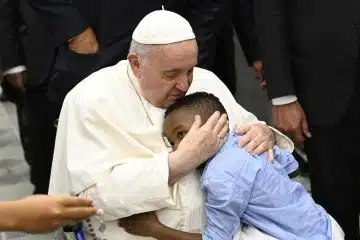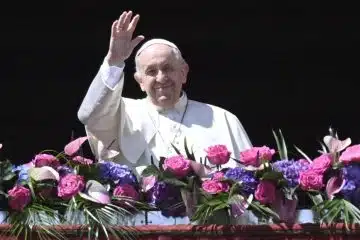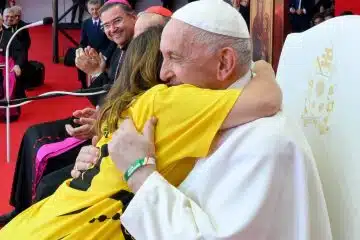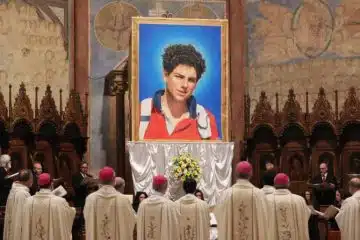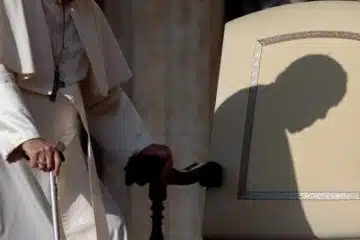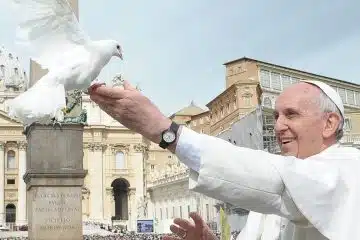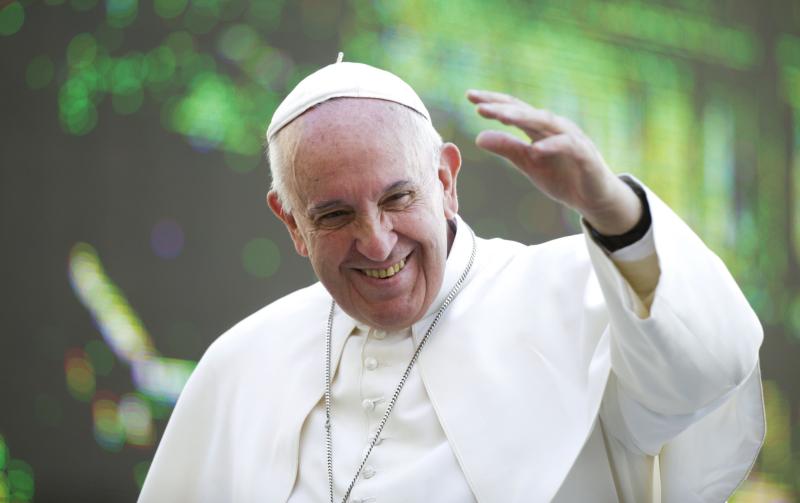Catholic parish offers sanctuary amid Minneapolis riots
by Anna Wilgenbusch
Minneapolis, Minn., Jun 2, 2020 / 04:17 pm MT (CNA).- When protests following the death of George Floyd turned violent Thursday night, a small Catholic parish in Minneapolis became a refuge for neighbors who didn’t feel safe in their homes.
St. Albert the Great Parish, located in the Longfellow neighborhood, sheltered 34 neighbors as riots destroyed surrounding businesses and damaged homes the night of May 28. Less than a mile from the church, thousands of protesters gathered to burn the Minneapolis Third Police Precinct, many of them inflicting violence on the surrounding area as well.
Father Joe Gillespie, pastor of St. Albert the Great, said the church’s neighbors feared fire and burglary, and asked the church for shelter. After receiving a call from the Volunteers of America asking for assistance, the church welcomed its neighbors into the church social hall, asking them to provide their own blankets and mats to sleep on.
“It wasn’t a Hilton,” Gillespie told CNA, while adding that the church basement provided running water and plenty of bathrooms.
The church is a back-up site for the Volunteers of America, which houses former inmates transitioning back into the workforce in Minneapolis. In case of floods or power-outages, residents can seek refuge in St. Albert the Great.
Although the parish’s partnership with Volunteers of America has been in place for over 10 years, the church had not been thus-utilized until this crisis.
St. Albert the Great office and communications manager Erin Sim received the call from the Volunteers of America the morning of May 28, and immediately made the church basement available to them.
“You can’t just help your own, you have to be available to help everybody,” she said.
As violence once again escalated that night, some of the residents who sought shelter in the church took the building’s safety into their own hands. They took shifts to keep watch over the building, joining a group of Native Americans who kept watch over the attached Native American immersion charter school.
“We have been miraculously spared from the devastation around the Church,” said Sim.
Father Joseph Williams of St. Stephen’s Church in Minneapolis also received a call from a parishioner seeking refuge in the church. The Sanchez-Ponce family, who also live in the area surrounding the Third Police Precinct, took shelter in the church rectory the night of May 28, according to a report by the Catholic Spirit.
Not every Twin Cities parish emerged unscathed; the Basilica of Saint Mary in Minneapolis suffered fire damage, and graffiti was found on the Church of St. Mark in St. Paul, over two miles away from the heart of the violence.
“It had a war-like quality,” said Gillespie. “We’ve been under siege.”
In wake of the violence inflicted on their community, Gillespie said that the message of togetherness during the ongoing coronavirus pandemic extends to this situation.
“We’re in this together,” said Gillespie, echoing the refrain of the pandemic. “It takes a neighborhood to repair itself. It’s not just my house or my church, it’s our church and our house.”
“[St. Albert’s] has always been a welcoming parish,” said Gillespie. The church has been in the neighborhood for 85 years and was a place that the community gravitated to when their homes felt threatened.
“Any church offers that possibility in times of need,” said Gillespie, who said the parish follows the “sanctuary model.”
The Saint Albert the Great community has received an outpouring of donations to distribute to those in need, including water, toiletries, cleaning supplies, and food. Gillespie noted that the church received three substantial monetary donations the morning of June 1 alone.
Giving back to those in need is nothing new to St. Albert’s church: even before the recent destruction in the neighborhood, St. Albert was helping to provide food and rent to those most affected by the pandemic.
Parishioner Rebecca Davis, who has lived in the Longfellow neighborhood since 2001, said that she thinks of St. Albert the Great as “the little parish that could.”
Since the onset of the coronavirus, St. Albert’s has organized teams of parishioners to serve the community, both parishioners and non-Catholics alike.
The community response to the violence accompanying protests has largely been a grass-roots effort to meet the community’s needs as they emerge.
“It’s a lot of pop-up organizations,” said St. Albert the Great part-time staff member Ed Burke. “One day they will come up, they will start taking donations, they will fill a field, and then they will stop. So then you go somewhere else.”
“So many people want to help but they aren’t sure what to do,” said Davis. She recently tried donating food to a local school that called for donations, and joined a line that stretched around several blocks in order to do so.
“So much has been destroyed,” said Sim, “but [it is] inviting us to think about the world we want to rebuild.”
Despite the destruction he has witnessed in the past week, Father Gillespie will not give up his sense of humor.
“I haven’t been to a slumber party since I was about 10,” said Gillespie, reflecting on Thursday night.


